You know we are big fans of linen clothes as it is one of the most sustainable fibers out there. Not only that, it looks gorgeous, classy and elegant. And even more than that, linen is like wine… with age it gets even better! For some reason, there is this idea that linen is difficult to take care of and we want to show you that it is not that difficult at all. Just a little bit of care will go a long way and your linen clothes can last literally a lifetime or as you later will learn a couple thousand years. ?
Before we get to the tips on how to take care of your gorgeous linen clothes, we want to invite you to have a look at the impressive selection of linen clothes we have available at Goshopia.com. All of them are pre-shrunk and available in plenty of sizes. Remember we have Free International Delivery!
-
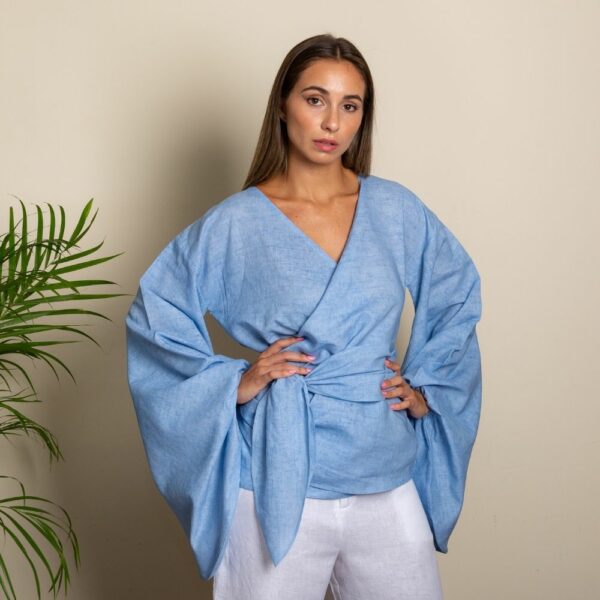 Blue Bell Sleeves Linen Wrap Top95.30$
Blue Bell Sleeves Linen Wrap Top95.30$ -
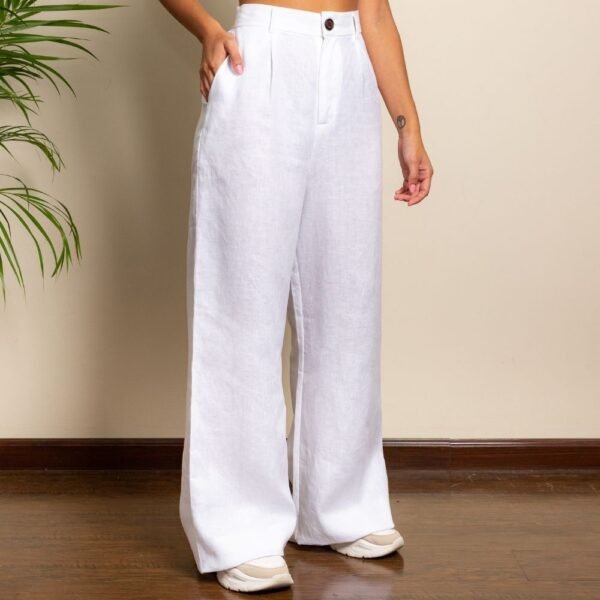 White Linen Trousers74.88$
White Linen Trousers74.88$ -
 Black Linen Trousers74.88$
Black Linen Trousers74.88$ -
 Blue Linen Co-Ord Midi Skirt95.30$
Blue Linen Co-Ord Midi Skirt95.30$ -
 Blue Linen Co-Ord Top With Centre Closure78.97$
Blue Linen Co-Ord Top With Centre Closure78.97$ -
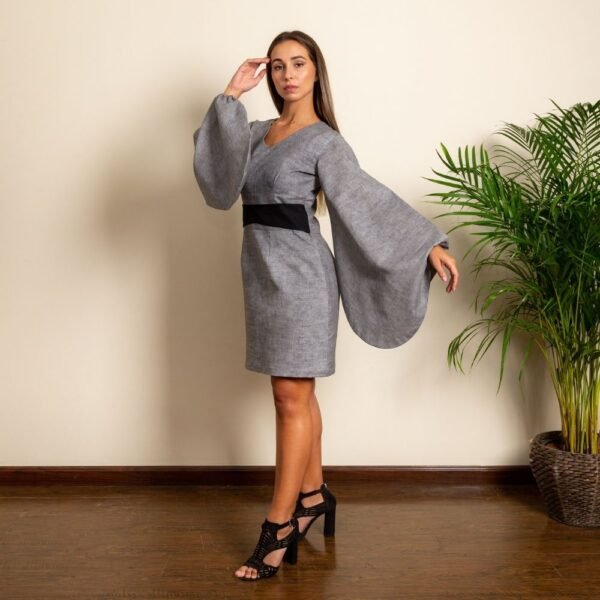 Linen Bell Sleeves Dress with Belt108.92$
Linen Bell Sleeves Dress with Belt108.92$
Now, let’s learn more about this amazing fiber: Linen.
What is linen?
Linen is a woven fabric made from the fibers of the flax plant. For nerds out there that like facts like me, flax in ancient Greek was called λινόν (linón), in Latin linum and the scientific name for the plant is Linum usitatissimum. It is one of the oldest, most eco-friendly textiles in the world. Linen in its original color is off-white, but this fiber can take dyes very well.
We see linen today in clothes, and home coverings such as tablecloths, bedsheets, cushions, napkins…that is why the term “linens” are used for these coverings even though they might not be made out of linen specifically.
What is great about linen?
- Linen is soft on the skin and it is able to absorb and release moisture really fast. That is why it is great for warm and humid weather or the summer.
- Linen fabric breathes well, helping to regulate your body temperature.
- It repels dust and dirt.
- Super durable fiber, yet gentle on the skin. Imagine if it is durable that in 1881 when they found the tomb of the Pharaoh Ramses II, who died in 1213 BC, the linen wrappings were in perfect condition after more than 3000 years. Same with the curtains of the tomb of Tutankhamen. That is what I called really vintage! ?
- It is not too elastic, which means that it doesn’t stretch much but tends to wrinkle, so we need to take care when folding and storing it.
- Flax grows everywhere. It doesn’t require pesticides or harsh chemicals to grow. The plant has other uses besides fashion.
- It is smooth and lint-free and it gets softer the more you wash it.
- It has high conductivity and doesn’t accumulate static electricity. No funky hair when getting dressed!
- Linen can withstand high temperatures and has only moderate initial shrinkage. In any case, all the Goshopia linen clothes are pre-washed so there is no shrinkage.
- It might have some small lumps as it is a natural fiber. This texture is part of its beauty.
- It is two to three times stronger than cotton and dries at a much faster rate.
- The natural fibers also hold dye colors better than some other materials, and thus the fabric is available in almost any imaginable color.
- Linen is also naturally anti-bacterial. That is why it was a popular choice for bandages for centuries and a favorite for windows and accessories.
- It has inbuilt insect-repellent properties so you shouldn’t need to worry about moths or other similar creatures. It is hypoallergenic, so a great fit if you suffer from allergies.
- Comfortable yet, linen clothing has developed a cool and elegant look & feel that allows wearers to make a subtle but eye-catching statement wherever they go.
- It is easy to style and matches denim and cotton very well.
-
 Black Pleated Maxi Dress with Waistbelt129.34$
Black Pleated Maxi Dress with Waistbelt129.34$ -
 White & Blue Midaxi Shirt Dress106.19$
White & Blue Midaxi Shirt Dress106.19$ -
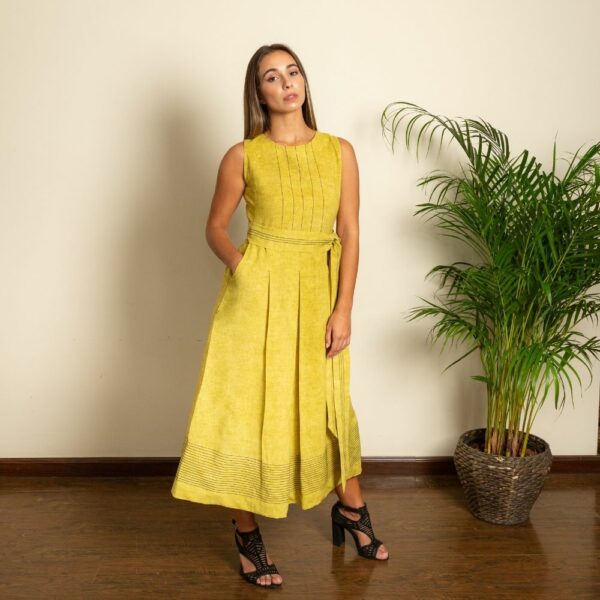 Yellow Pleated Maxi Dress with Waistbelt129.34$
Yellow Pleated Maxi Dress with Waistbelt129.34$ -
Sale Product on sale
 White Havana Oversized Blazer
White Havana Oversized Blazer260.94$Original price was: 260.94$.200.49$Current price is: 200.49$. -
 Light Blue Havana Oversized Blazer260.94$
Light Blue Havana Oversized Blazer260.94$ -
 Black Havana Oversized Blazer260.94$
Black Havana Oversized Blazer260.94$ -
Sale Product on sale
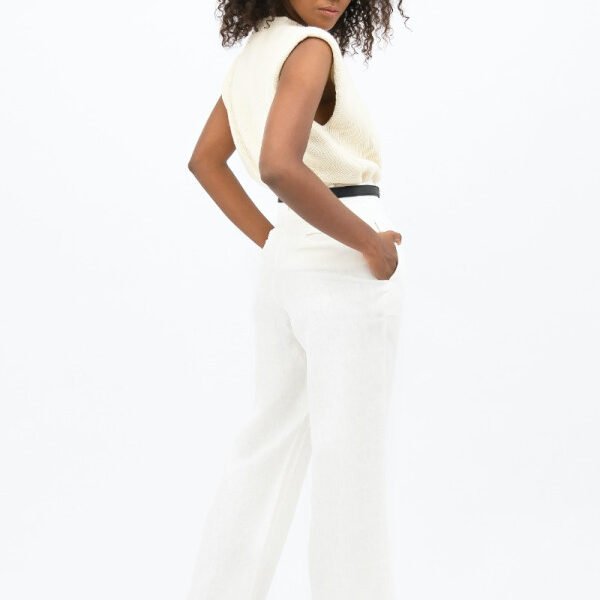 White French Riviera Wide Leg Pants
White French Riviera Wide Leg Pants160.19$Original price was: 160.19$.150.12$Current price is: 150.12$. -
Sale Product on sale
 Blue French Riviera Wide Leg Pants
Blue French Riviera Wide Leg Pants160.19$Original price was: 160.19$.150.12$Current price is: 150.12$. -
Sale Product on sale
 Black French Riviera Wide Leg Pants
Black French Riviera Wide Leg Pants160.19$Original price was: 160.19$.150.12$Current price is: 150.12$. -
 White Seville Short Sleeves Shirt150.12$
White Seville Short Sleeves Shirt150.12$ -
 Blue Seville Short Sleeves Shirt150.12$
Blue Seville Short Sleeves Shirt150.12$ -
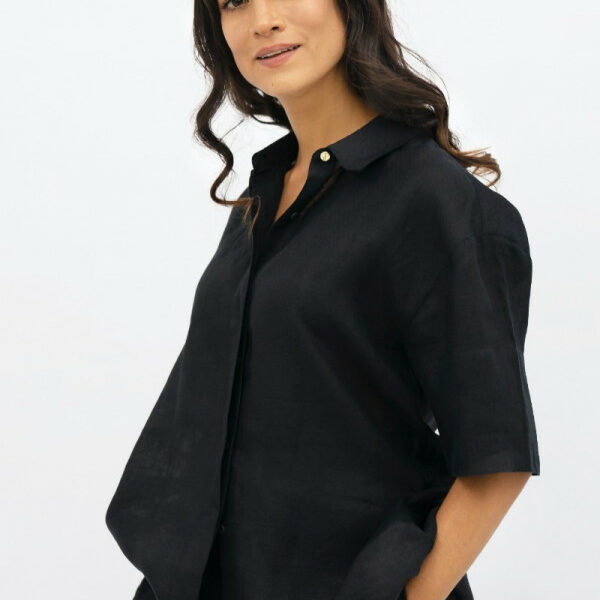 Black Seville Short Sleeves Shirt150.12$
Black Seville Short Sleeves Shirt150.12$
A little bit if history
Ancient cultures realized that even though the refining process was time-consuming the fibrous stems of the flax were lightweight, durable, moisture-resistant, and could be turned into threads and later be used to weave. Initially, and maybe because of their properties and cost to produce, only royalty or wealthy families wore linen clothes. Archaeologists keep on finding linen from the Neolithic age, Ancient Egypt- where it was sometimes even used as currency- and Phoenicia. Linen has been mentioned even in the Bible as what angels wore (Revelation 15:6). In the Middle Ages, it got more popular, especially for clothes in contact with the skin like shirts, chemises, waist-shirts, lingerie, and detachable shirt collars and cuffs. The inner layer of cloth garments for example dress jackets was traditionally made of linen, hence the word lining.
How is linen produced?
Linen stems had to be collected by hand, remove leaves, roots, and blooms. After that, they were “retted”, leaving them at the river banks for bacteria to eat the exterior part of the stems. After the fibers were the only thing left, they were combed, stiff fibers removed, spun into thread, transferred on spools, and sent to the weavers. It is laborious to process- even in this modern age- hence it is a pricey fiber.
-
Sale Product on sale
 Blue French Riviera Mom Shorts
Blue French Riviera Mom Shorts129.97$Original price was: 129.97$.79.59$Current price is: 79.59$. -
Sale Product on sale
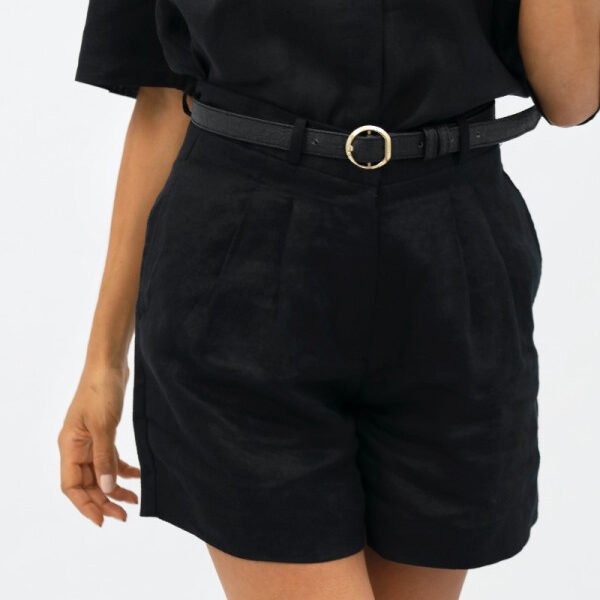 Black French Riviera Mom Shorts
Black French Riviera Mom Shorts129.97$Original price was: 129.97$.79.59$Current price is: 79.59$. -
 White Seville Midi Dress170.27$
White Seville Midi Dress170.27$ -
 Blue Seville Midi Dress170.27$
Blue Seville Midi Dress170.27$ -
 Black Seville Midi Dress170.27$
Black Seville Midi Dress170.27$ -
Sale Product on sale
 Universe Linen Headband- UAE Only
Universe Linen Headband- UAE Only48.74$Original price was: 48.74$.35.40$Current price is: 35.40$. -
Sale Product on sale
 Infinity Linen Headband Double Ply- UAE Only
Infinity Linen Headband Double Ply- UAE Only51.46$Original price was: 51.46$.35.40$Current price is: 35.40$. -
Sale Product on sale
 Infinity Linen Headband Single Ply- UAE Only
Infinity Linen Headband Single Ply- UAE Only48.74$Original price was: 48.74$.35.40$Current price is: 35.40$.
On a curious note

Did you know that linen was used to print banknotes too? Yep! in 1923 in Bielefeld (Germany) printed their bills in linen. Paper made of linen can be very strong and crisp. Oh! And it is not the only one! The United States and many other countries print their currency on a paper mix made from 25% linen and 75% cotton.
How to take care of our linen clothes
Generally, linen is an easy to care fabric. You can machine wash it or dry-clean it. Still, it is best to always check first the manufacturer’s care label and take into account any special instructions before cleaning your linen garment. If your linen clothing is a blend of linen and cotton or rayon, the care instructions may be different. The fabric content of trim or lining can also affect the method of cleaning.
For example, our Lucca or Aurora dresses are a blend of linen and rayon. They are part of the Slow Fashion Philosophy, so only a few units are produced.
-
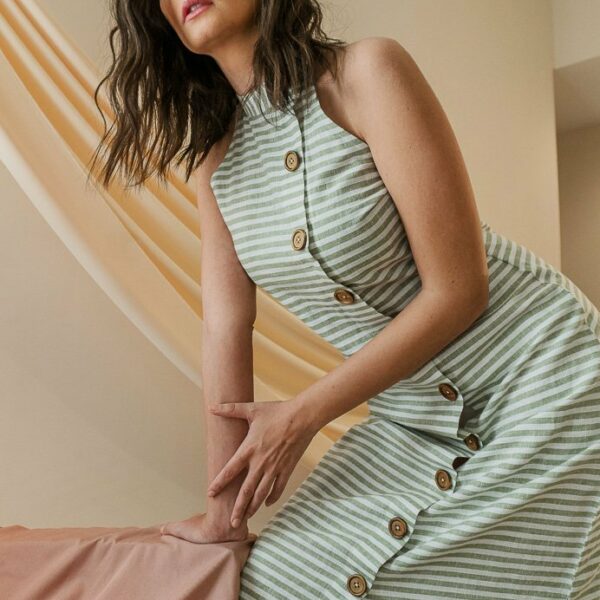 Lucca striped halter top dress125.26$
Lucca striped halter top dress125.26$ -
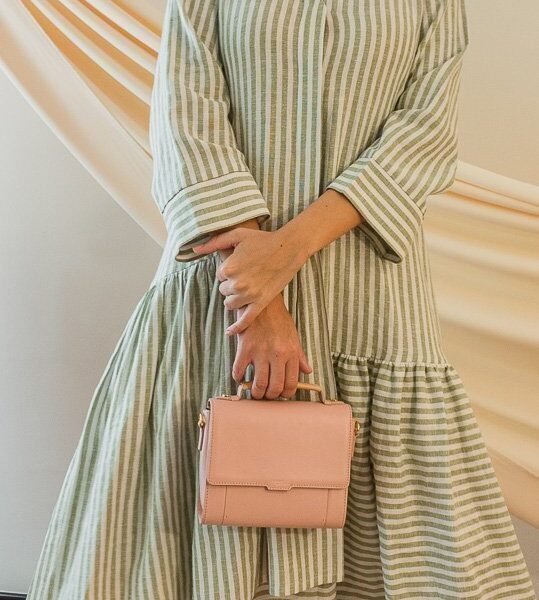 Aurora midi dress196.05$
Aurora midi dress196.05$ -
Sale Product on sale
 Bamboo Square Bag
Bamboo Square Bag108.92$Original price was: 108.92$.68.07$Current price is: 68.07$. -
Sale Product on sale
 Bamboo Ark Bag
Bamboo Ark Bag95.30$Original price was: 95.30$.68.07$Current price is: 68.07$.
Cleaning Linen Clothes
If machine wash, use a delicate or short cycle with lukewarm or cold water. You will extend the life of the fabric if you hand-wash your linen clothing in cold water. Steer clear of harsh laundry detergents when washing linen clothes. Better use a mild detergent for delicate fabrics. Always remember to separate your whites and colors—new linen dyes have a tendency to bleed in the wash.
If you decide to hand wash your linen clothes just put them in a clean sink with cool water and mild detergent. Gently agitate, drain the soapy water, rinse the sink and refill with cool water until the water is soap-free.
Also, do not wring linen to remove excess water as the fibers might stretch a bit and you will get extra wrinkles. It is better to roll each item in a towel to remove moisture.
If you have stains, put immediately some water and soap or even dishwasher if it is a greasy one!- to make it easier to remove them later. Normally we should use cold water for linen but if the stain is of wine, the recommendation is to boil the garment to remove the stain. Take into account that hot water might shrink slightly the linen.
When it comes to bleaching, you can use bleach on your white linen garments only. But avoid over bleaching as this can cause yellowing.
You can also take them to the dry cleaner. We recommend you do this with garments that are more structured, like tailored items such as linen jackets or suits. This is not due to the material itself, but due to the way they are constructed and the lining they might have. Check the label first.
Drying
Once cleaned, it is better to air-dry your linen garment on a padded hanger or lay flat on a drying rack to avoid wrinkles. Avoid using the clothes dryer. If in a hurry, you may tumble dry on low for five minutes but take them out before the clothes get too dry or you will have a hard time ironing.
Ironing
When ironing, add a bit of moisture or steam. Set your iron on the linen setting -normally the highest- and iron while the garment is still a bit damp. The heat from the iron will dry the fabric and remove wrinkles. Turn your garment inside out before ironing. Use a press cloth between your iron and the fabric to prevent your linen fabric from taking direct heat. You can use also starch or sizing if you want clothes to keep their shape and be very crisp. You can iron white linen on both sides, but dark linen should be pressed only on the reverse side or you might get some shine. To avoid that you might just use a press cloth.
Storing
We better hang our clothes or even roll them. This is better than folding them. When we fold our clothes always through the same area, we might create creases. Then when we are ready to use them, they have the folding lines and that is not cool. With a hot iron, we can remove the creases, you can add steam or a bit of water to soften the crease before applying the iron.
When wearing
The only thing with linen might be the wrinkles, so these are some handy tips to prevent them from appearing in some garments. Think that it is part of the nature of the textile and it is difficult to avoid them 100%. At the end of the day, we are pretty flexible and linen is not so much. Still, there is a casual & cool vibe to linen clothes.
If you are using a jacket, you might want to remove it while driving or during extended periods of sitting. Maybe you can hang your jacket on a hanger in the car and in your office until you need to wear it again.
With pants, we can not remove and they tend to wrinkle in different areas. Then you can gently lift your pants from the knees as you sit down. This will minimize fabric stretch, sag, and subsequent wrinkles.
If you have a wrinkly situation and no iron close by, wet your hands a bit and using them as makeshift irons rub the wrinkles off stretching them out by pulling the fabric in opposite ways.
We always tell you to wash your clothes when they are really needing it. In the case of linen, most probably they need some airing and some ironing but are not really dirty as yet. Just add some steam or moisture to remove the wrinkles before the next use.
Linen vs Cotton
Linen is just as easy to look after as cotton, but it is way more durable- Remember the mummies!- It gets better with each wash, unlike cotton which can become threadbare as the fibers weakened. Linen uses fewer resources in its production, so it is a more eco-friendly fiber. If you are to choose cotton, try to buy organic cotton instead of conventional cotton. It is better for you, for the environment, and for all the workers in the supply chain, including the farmers. Check this GOTS certified Cotton tops.
How Do You Clean Your Linen Clothing?
Let us know in the comments and if you have any question, do not hesitate to ask us! We will be happy to help!
LIKED THIS ARTICLE?
Then for sure, you will also love these!
-
HOW TO SOLVE THE MACRO & MICROPLASTICS POLLUTION
-
LEAD A BETTER LIFE WITH THESE 15 WELLNESS TIPS
-
GLOSSARY OF SUSTAINABLE FASHION TERMS
-
UNDERSTANDING VEGAN FASHION
-
SUMMER ESSENTIALS 2019









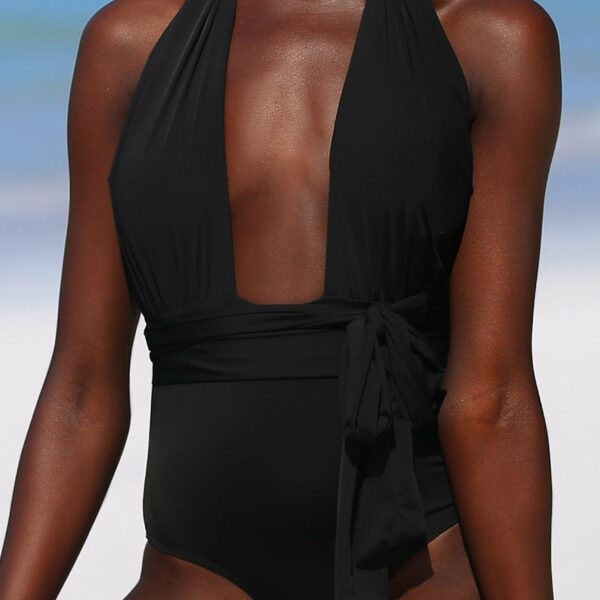

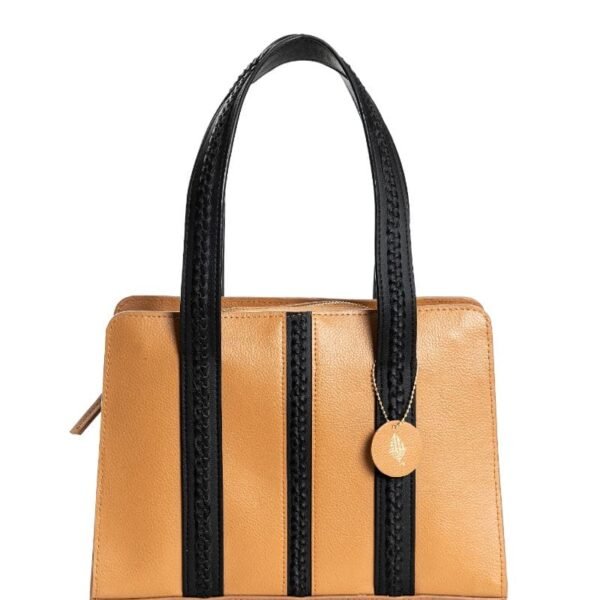

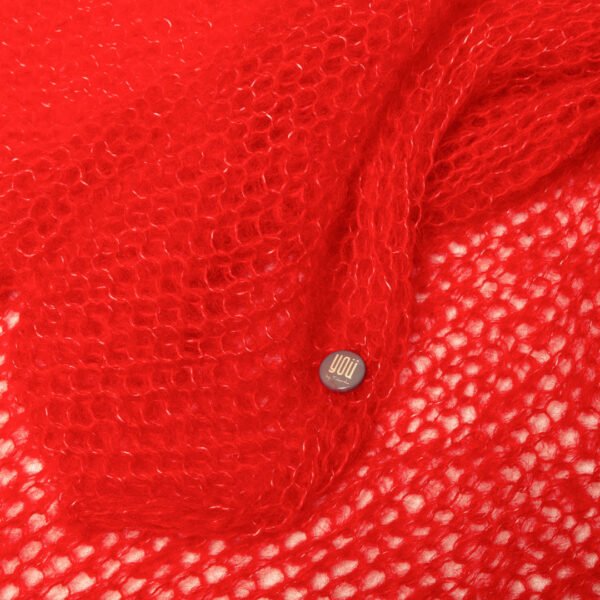







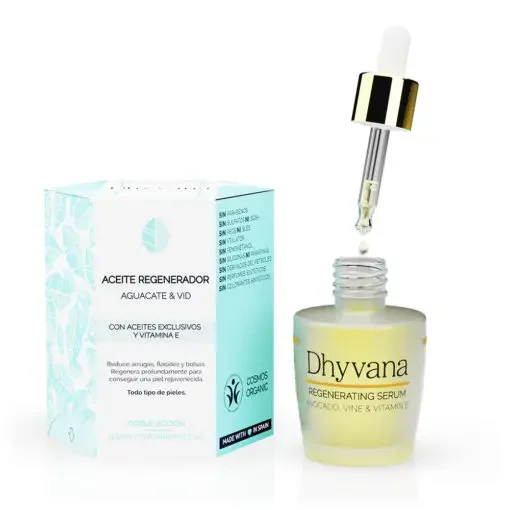




2 Comments
Parinitha Bhargav
30 November 2021 at 21:11Linen clothes become a favorite of many as they can be worn in all seasons. Thank you for the helpful tips to care for this adorable cloth.
clic aqui
23 December 2021 at 20:27Es una de las telas más conocidas mundialmente. Se asocia al lujo, además de ser muy cómoda y elegante. Como tiene un coste elevado, la industria textil mezcla la fibra de lino con otras fibras como la viscosa o el algodón sin que pierda sus características y sea un poco más económica. Además, se le realiza un baño de resina que le da un aspecto encerado y hace que se arrugue mucho menos. Es una tela fuerte, fresquita, rígida y muy resistente. Se usa para la ropa de verano, como vestidos, camisas y pantalones.